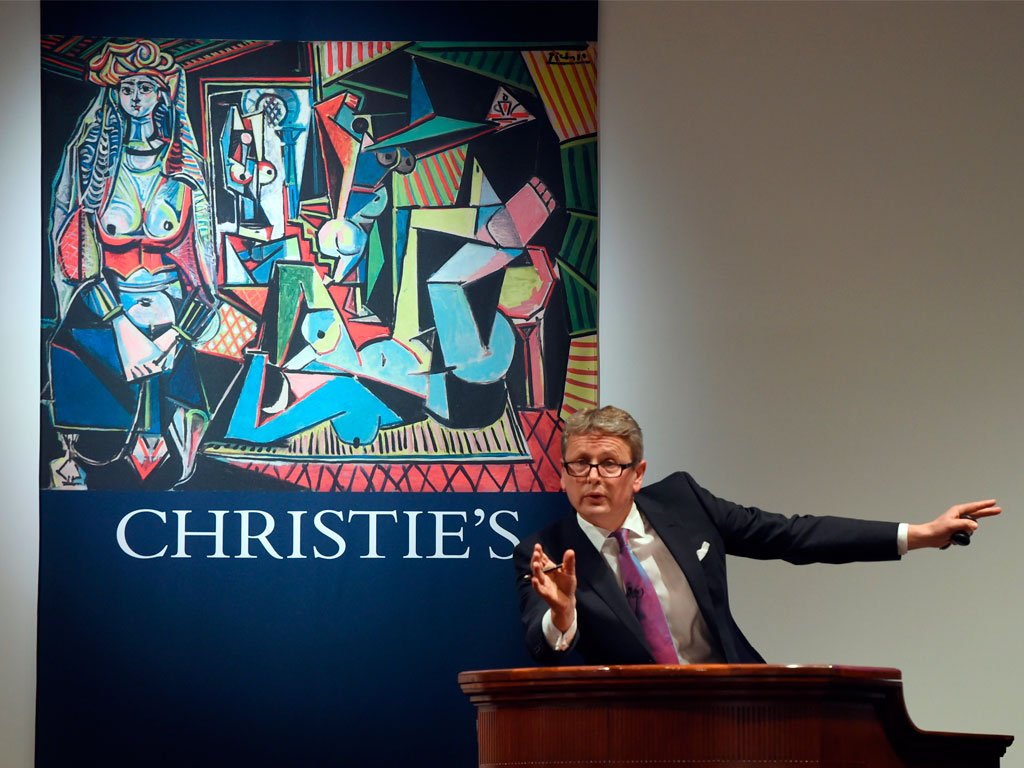Among the global elite, the definition of what it means to be wealthy is being rewritten. Once, the walls of the world’s most powerful homes gleamed with Picassos, Rothkos, and Warhols, visual shorthand for intellect, taste, and cultural sophistication. A perfectly placed artwork, curated through Christie’s or Sotheby’s, was not merely decoration; it was a declaration of status, education, and global reach. But as 2025 draws toward its close, a quiet transformation is unfolding. The new language of luxury is increasingly written not in oils and marble, but in data, algorithms, and digital gold.

A Market in Pause
The art world, long considered one of the most glamorous and resilient of asset classes, is at a crossroads. Major auction houses report a plateau that feels more like an extended holding pattern than a resurgence. Christie’s raised roughly $2.1 billion in the first half of 2025, virtually unchanged from the previous year. Sotheby’s figures tell a similar story. The numbers are neither disastrous nor dynamic, suggesting a sector that has settled into a kind of subdued continuity.
Bonnie Brennan, Christie’s recently appointed chief executive, calls it a period of “strategic stability,” a polite euphemism for a lack of growth. “In uncertain times,” she has remarked, “continuity is its own form of success.” She may be right. After several years marked by geopolitical turmoil, pandemic aftershocks, and volatile wealth cycles, the art market’s ability to simply hold its ground could be viewed as a quiet triumph.
Yet behind the scenes, anxiety simmers. For many collectors, the allure of art as a financial asset has dimmed. High transaction costs, opaque valuations, and sluggish resale potential have made masterpieces less enticing to investors who now think in sharper, more financial terms. As Philip Hoffman, founder of The Fine Art Group, noted recently, “Clients are thinking like fund managers, not patrons.”
The Competition: Gold, Stocks, and the Digital Dream
In contrast, other markets have been booming. The S&P 500 rose over 5% in the first half of the year. Gold surged by more than 25%, and Bitcoin, volatile but magnetic, posted a solid 9% gain. BlackRock’s Bitcoin Trust ETF attracted an astonishing $84 billion in assets by mid-summer, outstripping the entire estimated value of global art market sales for the previous year.
For the ultra-wealthy, such numbers are irresistible. Art, by comparison, feels static, an object of admiration, yes, but not acceleration. The logic of liquidity rules this new era: wealth must move, multiply, and manifest in real time. Crypto and tech investments promise exactly that, speed, scale, and a sense of future-facing dynamism that a century-old canvas cannot easily match.
Even so, art retains one advantage that Bitcoin, for all its shimmer, cannot replicate: soul. A Canaletto or a Basquiat may not double in value overnight, but it can still stir the emotions in ways that data never will. When Christie’s sold Venice, the Return of the Bucintoro on Ascension Day for $43.9 million just days after Jeff Bezos’s Venetian wedding, the timing felt symbolic. Amid the rush toward digital assets, beauty, embodied, historical, and ineffable, remains the ultimate trophy.
Fairs Without Fervor
Still, the art ecosystem that surrounds such moments is changing dramatically. Art fairs, those glossy, champagne-fueled fixtures of the international social calendar, are struggling to maintain relevance. Dealers lament dwindling conversations and growing transactional fatigue. Tim Blum, a veteran gallerist, recently closed his Los Angeles space, describing the current system as “broken” and modern fairs as “performances without purpose.”
Indeed, many fairs now function more like lifestyle festivals than marketplaces. Collectors socialize, influencers document, and brands sponsor, but the art itself has become secondary. Works are often sold in advance through discreet digital channels; the fair itself serves as a glamorous afterparty. As James Murdoch, a key investor in Art Basel’s parent company, has observed, the fair model increasingly resembles a “travelling circus,” one that benefits host cities more than the dealers who foot the bill.
For some observers, this evolution signals not decline, but transformation. Art, like fashion or fine dining, is becoming experiential, a form of cultural luxury that sells not objects but moments. For the world’s wealthiest, a trip to Art Basel in Miami or the Venice Biennale is less about acquisition and more about access: to other collectors, to artists, to the right kind of conversation.

Generational Shifts and the New Collector Mindset
The changing market also reflects generational dynamics. The “artberg” amassed by baby boomer collectors, modernist and post-war masterpieces bought in the 1980s and ’90s, holds less appeal for younger billionaires. The new patrons of wealth, many of whom made their fortunes in tech, crypto, or AI, are less attached to the idea of art as a static inheritance. They prefer movement, novelty, and conceptual resonance over pedigree.
Brussels-based collector Alain Servais describes this evolution as a necessary correction. “The infrastructure of the old market is too expensive, too opaque,” he explains. “True art, the kind that challenges, not flatters, will survive. The rest is speculation.” His prediction is that the financialized side of the trade will continue to contract, leaving behind a leaner, more intellectually driven culture of collecting.
This vision dovetails with the ideas of Marc Spiegler, former global director of Art Basel, who has argued for a “cultural pivot.” Art, he writes, should be marketed less as a financial instrument and more as an “Instagrammable, sapiosexy pleasure,” a cerebral indulgence for the ultra-educated and ultra-rich. In other words, the next phase of art collecting may depend not on returns, but on signaling.
The Semiotics of Status
Luxury, after all, is always about communication, what one’s choices say to the world. In an age of algorithmic consumption, owning a masterpiece sends a subtler message than flaunting a crypto wallet or a superyacht. It signals patience, discernment, and a willingness to engage with history. It says: I understand value beyond volatility.
But for many of today’s elite, the language of status has evolved. Google’s AI-generated “overview” of the ultimate modern status symbols lists private jets, exotic travel, and curated libraries, but not art. The omission is telling. Culture is no longer assumed to be the apex of sophistication; experience is. The world’s richest no longer simply buy beautiful things, they buy access to beauty itself, through immersive travel, private performances, or digital ownership.
Yet amid this shift, art still offers something uniquely resistant to the algorithmic age: physical presence. A Rothko must be stood before, its vast fields of color experienced bodily, not virtually. A Louise Bourgeois sculpture occupies space in a way no NFT ever can. For those who have everything, that tangible, sensory intimacy can feel revolutionary.
The Future of Beauty as Investment
So where does this leave the art world? Perhaps in the same position it has always occupied, oscillating between commerce and transcendence. The current lull in sales may not mark decline, but recalibration. Art may be ceding ground as an asset class, but gaining relevance as an aesthetic experience.
In the next decade, we are likely to see new hybrid models: blockchain-backed provenance systems that lend transparency to traditional collecting, fractional ownership schemes that democratize masterpieces, and AI-assisted curation that pairs collectors with works aligned to their intellectual or emotional profiles. The convergence of art and technology, far from eroding authenticity, could instead open new avenues for appreciation and participation.
In that light, the supposed competition between “Picasso and Bitcoin” begins to look misplaced. The two are not adversaries but complementary symbols of modern desire, one rooted in permanence, the other in possibility. Both represent the human urge to transcend the ordinary, to convert imagination into value.
Continuity in a Changing World
For now, the art world continues to evolve, quietly and cautiously. Auction houses lean into luxury sectors, collectors become more selective, and new wealth experiments with alternative forms of ownership. But despite the noise of markets and the speed of algorithms, art’s essential power endures.
Because when the servers crash, and the crypto wallets fade, and the metaverse fashions pass, a painting will still hold its silent gravity, a conversation between maker and viewer that no code can replicate. In that enduring dialogue lies art’s truest form of wealth: not speculative, not transactional, but deeply, defiantly human.
Written By: Lydia Kelly
Published: 11th Novemeber 2025